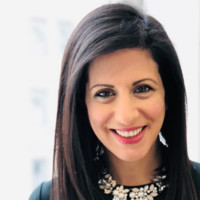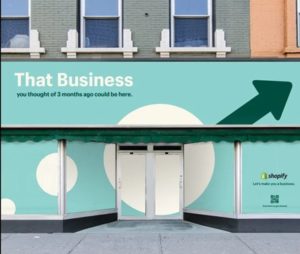
Dâna Barakat
For far too long, B2B marketers have been told that we’re not the cool kids at the advertising party. The solutions we sell tend to be strictly functional, highly complex and not terribly visual—in other words, not cool. The problem is that we’ve heard this mantra repeated so often that, somewhere along the way, we internalized it. We became uncool. Worse—our work became uncreative.
But here’s the thing: B2B marketers are tremendously creative people. Our products and solutions have value. They have stories behind them. And the people behind the businesses that we serve want to be engaged. They want to be entertained. So why are so many of the campaigns we serve up so cold and dull? Why aren’t we investing in compelling customer journeys and captivating experiences? How, for the love of Pete, are we spending nearly $26 billion on ads every year and not blowing people’s minds with our imaginative executions?
The stage is set for a creative renaissance in B2B marketing. As B2B practitioners, we need to collectively recognize the false constraints that have been holding us back and move forward together into a more creative—and far cooler—future.
Shifting the Culture in B2B Marketing
The historic lack of creativity within the B2B marketing space has not been the result of B2B companies’ creative directors or marketing teams. The talent within B2B marketing departments and the agencies that serve them is just as vibrant and inventive as any within the B2C space. Rather, it’s the culture of the B2B space that has typically held back campaign creativity—a long-established sense of “this is just how things are done.”
Due to the complexity of many B2B solutions, as well as niche audiences that buy them, logic has dictated a “just the facts, ma’am” approach to B2B marketing. The idea has been that the company that can convey the clearest value proposition for the best solution to the right person at the right time will be the one that walks away with the contract. This is the premise behind today’s more-advanced account-based marketing techniques, in which the “who” you’re marketing to tends to take precedence over “how” you’re marketing the product.
Here’s the thing: There’s no reason that we have to choose one over the other. Just as in the B2C space, it’s possible to target B2B audiences in a sophisticated way and knock their socks off with creative messaging, both at the top of the funnel and at the bottom. Indeed, B2B brands must not neglect the importance of building high-level awareness within their industries. Reaching buyers at the right time and place, when they’re demonstrating intent to buy, is important. But ensuring these people know about your company and your products and services even before they’re in their consideration phase is immensely important as well. And that’s where creativity is everything.
Creativity as a Competitive Differentiator
As a B2B marketer, whether you’re creating brand initiatives, lead-gen campaigns, social posts, sales pitches or client creative, you should not be afraid to think more like a B2C marketer when it comes to grabbing people’s attention. In fact, as we move into a post-pandemic reality, creativity is going to become a significant competitive differentiator in many B2B spaces.
Many B2B segments have become oversaturated in recent years, and much like in the B2C space, innovative startups are challenging market share of established players in a number of industries. Then, of course, there is the fact that the pandemic has upended so many long-standing B2B marketing conventions around live events and in-person meetings. Taken together, these forces have set the stage for B2B marketers to experiment with a number of new strategies and tactics that were previously neglected because they simply didn’t fit into the standard B2B marketing mold.
As long as we’re breaking the B2B marketing mold, let’s go ahead and shatter it, shall we? As a B2B marketer, I’ve been pleased to see creative brand campaigns emerging. Consider:
● Last year, Cognizant took B2B content marketing to a new level with a compelling report “looking back on the next five years.” It was a fresh, innovative way to tell a story around a topic (i.e., the effects of the pandemic) that every other company seemed to be discussing in basic, straightforward, and very similar terms.
● Slack went beyond the standard, formal corporate of B2B marketing to showcase the inner child in every business professional when it comes to becoming more efficient.
● Meanwhile, Shopify got creative with an out-of-home campaign that avoided talking about its product and instead focused on what it could help small business owners accomplish.

Shopify gets creative without talking about its product.
These B2B companies understand that grabbing attention and driving interest takes more than a strong product and pitch. It takes creativity. It’s time to elevate creative ideas and executions further in the B2B space. Our companies need it. Our prospects and clients want it. And as marketers, our souls deserve it.
Dâna M. Barakat is vice president, marketing and communications, at New York Interconnect, a marketing services joint venture between Altice USA, Charter Communications and Comcast that helps brands connect to the 20 million-plus consumer market in the New York market.
Favorite